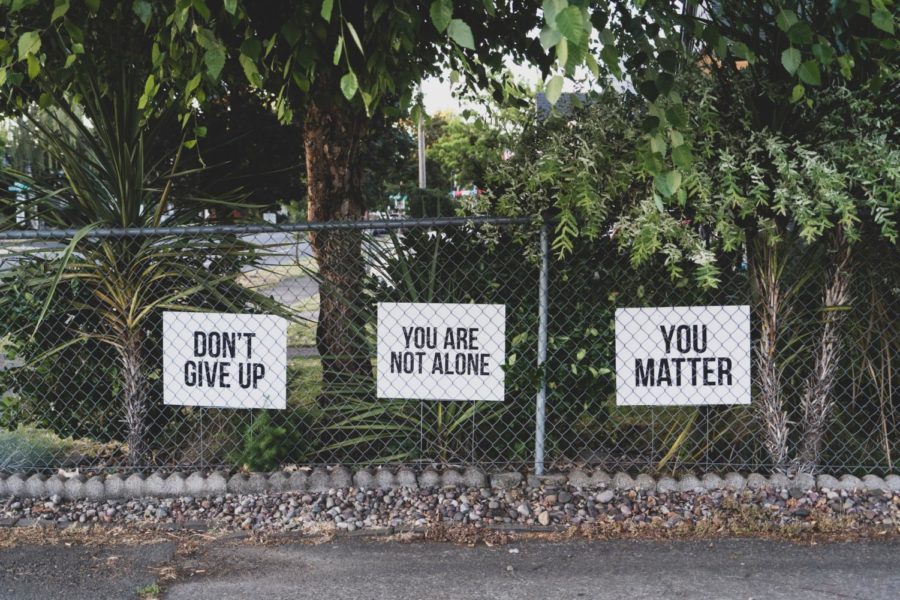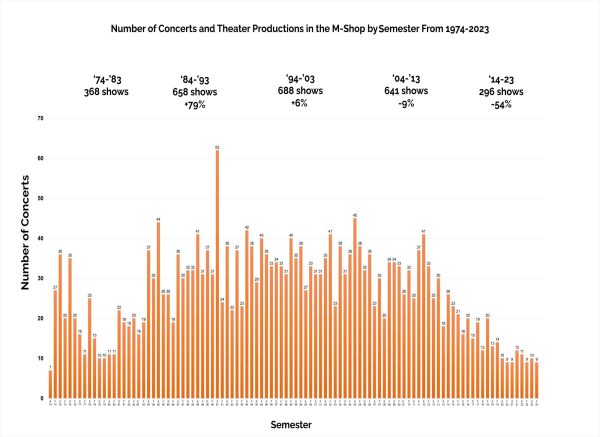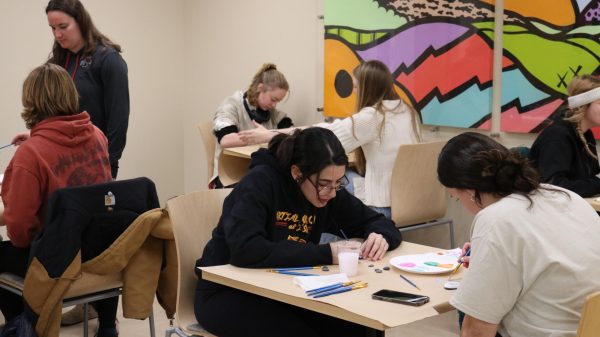Suicide prevention and what you can do
September 28, 2020
Beginning the conversation about suicide is hard. Suicide is a touchy subject and can be sensitive for anyone to talk about. However, no matter how difficult it is to discuss it, it doesn’t mean we shouldn’t talk about it. It should be a priority for us to bring light onto this subject.
The reason why it should be talked about more is the fact that suicide is not something that happens once in a while. It happens everyday, all around us. According to the Centers for Disease Control and Prevention, everyday, approximately 123 Americans die by suicide. Every 12 minutes, there is one death by suicide.
September is Suicide Prevention Month, and it is our duty to reach out and help people who are suffering in silence. There are different ways we can help spread awareness. By doing this, it can save lives. How can one help? What can one do to support suicide prevention?
Unfortunately, one can never fully stop a suicide from happening. It is a normal illness like any other diseases that humans can experience. There is no perfect prevention for this. There are many different causes of why it can happen, but you can never pinpoint an exact factor of why it will happen.
“The goal of suicide prevention is to educate as many people as possible to the warning signs and risk factors, to help people have conversations with those whom our gut tells us are struggling and to connect those who are having suicidal thoughts to needed resources —counselors, crisis lines, doctors,” said Lisa Dreesman, a suicide loss survivor.
The other most important thing you must do is to educate yourself. Educate yourself about the risk factors of suicide.
Risk factors are characteristics that make it more likely someone will consider, attempt or die by suicide. They can’t cause or predict a suicide attempt, but they’re important to be aware of, according to the Suicide Prevention Lifeline. You also should know of the warning signs for suicide to know if one of your loved ones might be at risk. Some of these warning signs can be either very mild or extreme. Pay attention to their behaviors over time. For more information on these risk factors and warning signs, visit suicidepreventionlifeline.org
One of the most effective ways to prevent suicide from happening is actually asking the victim if they have thoughts about suicide. By doing this, it gives them that pause button from their reality. Never think that actually being straightforward with this question will put that thought into their head. In fact, it might’ve been the question or conversation they have been waiting for.
If a loved one is suffering and showing signs, it is important to never avoid that conversation with them. Try to encourage them to speak to a counselor, and maybe call the crisis center on their behalf. Counseling services for anyone is very helpful and such a healthy way to cope with anything, Dreesman said.
“The most difficult part of counseling is calling or making an appointment, and the second hardest is to show up,” Dressman said. “You will feel relief in telling someone what you are thinking and how you are feeling. In fact, it is the first step to wellness.”
However, the main thing is to remind them they are not alone in this. Support them, and tell them that whatever they are feeling, it’s normal to struggle.
It can be difficult to fully comprehend and understand what others are feeling if one has never experienced this pain. In fact, one can never blame anyone for it. Our brains can be very powerful, and it can easily turn their back on itself. The brain can make people believe things that are not true, such as the feeling that there is no hope. It is hard for others to understand this is what their minds tell them everyday for suicide victims.
Suicide does not only affect the victim or the victim’s close family and friends. It touches people that have zero direct ties with them. This is called the ripple effect. The ripple effect expands out to anyone that is disturbed by it. It affects the whole community and then some. All these people are left with the grieving process. This process is different from other deaths and most certainly can be harder to sort out and to find help for coping. These survivors are able to be left with shame, isolation, anger, guilt, abandonment, rejection and even a risk for their own health and safety.
Alongside these emotions, there are unanswered questions that follow. What if I was there to stop it? Was there something I did to cause this? Was there a way I could have prevented this and saved them? Did they know I cared and loved them? Were they scared? What were they feeling? Did they feel pain? The list of the questions can go on and on. These questions can be extreme, haunting and very self-punishing.
Suicide is real. It is a touchy subject for anyone to talk about, but we can not avoid this conversation. It is our duty to help others that are struggling in silence.
“Evidence shows that providing support services, talking about suicide, reducing access to means of self-harm and following up with loved ones are just some of the actions we can all take to help others,” according to the Suicide Prevention Lifeline.
If you read this and you have been thinking suicidal thoughts, there is hope and help for you. Please remember that it is OK to not be OK. We all are not OK sometimes, but it is not OK to suffer in silence.
If you or someone you know is suicidal, these resources are available to help:
- Call the National Suicide Hotline at (1)-800-273-8255.
- Text HOME to 741-741 for the National Suicide Textline.
- LGBTQIA+ youth can get in contact with the Trevor Project by calling the TrevorLifeline at (1)-866-488-7386, text the TrevorText line by texting START to 678-678 or use the TrevorChat on their website.
- Or get more resources from the Suicide Prevention Resource Center.

















